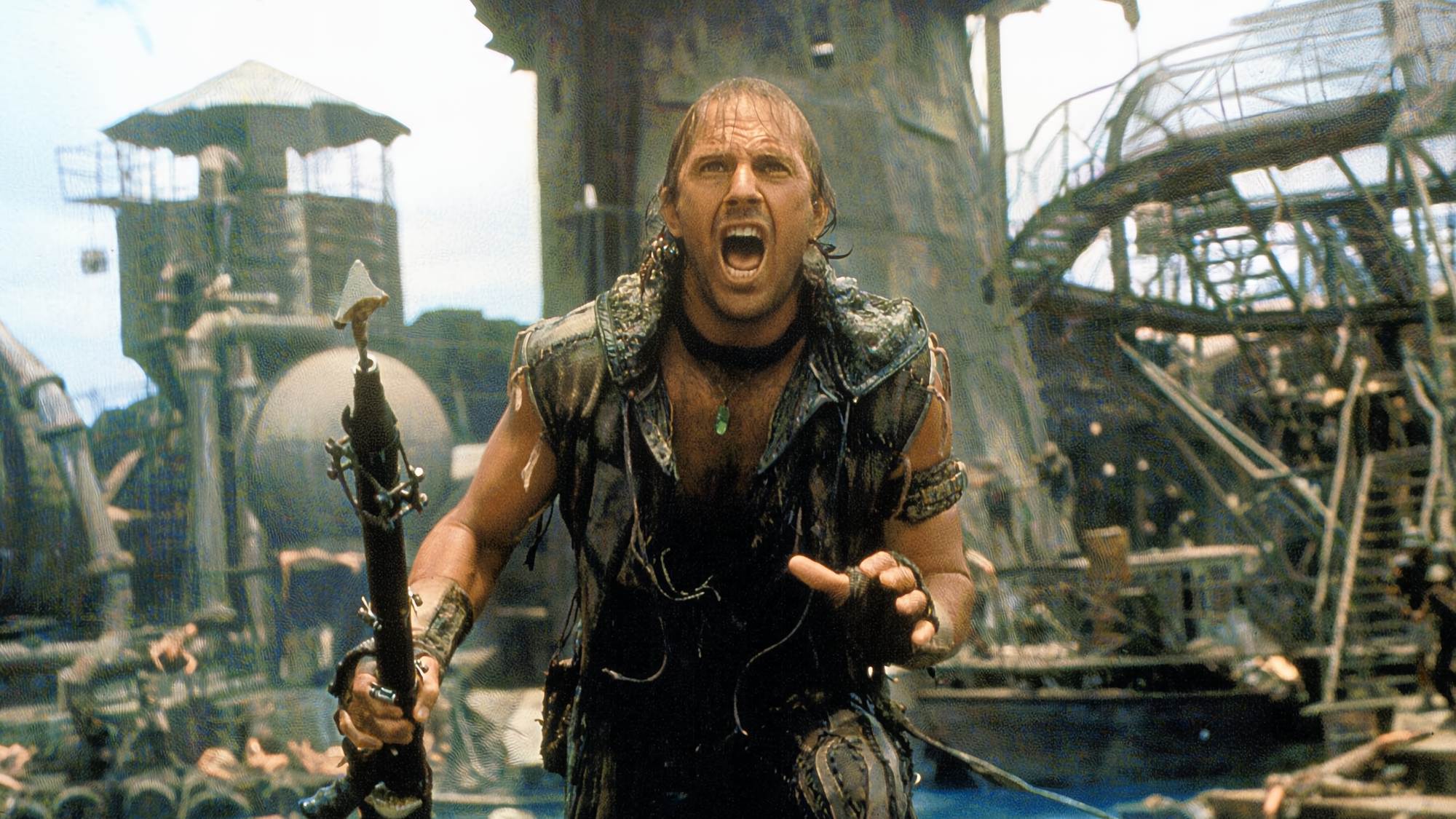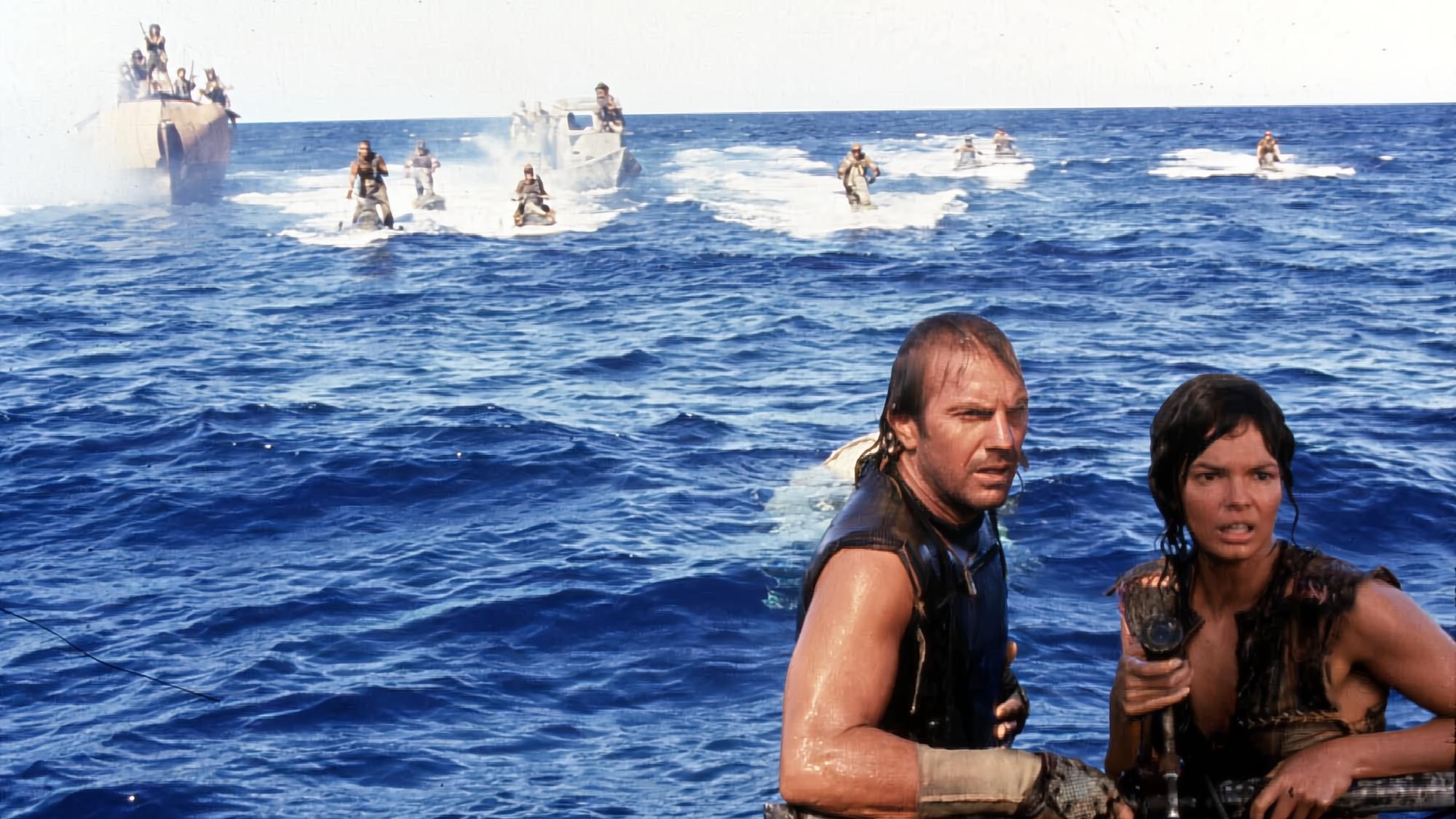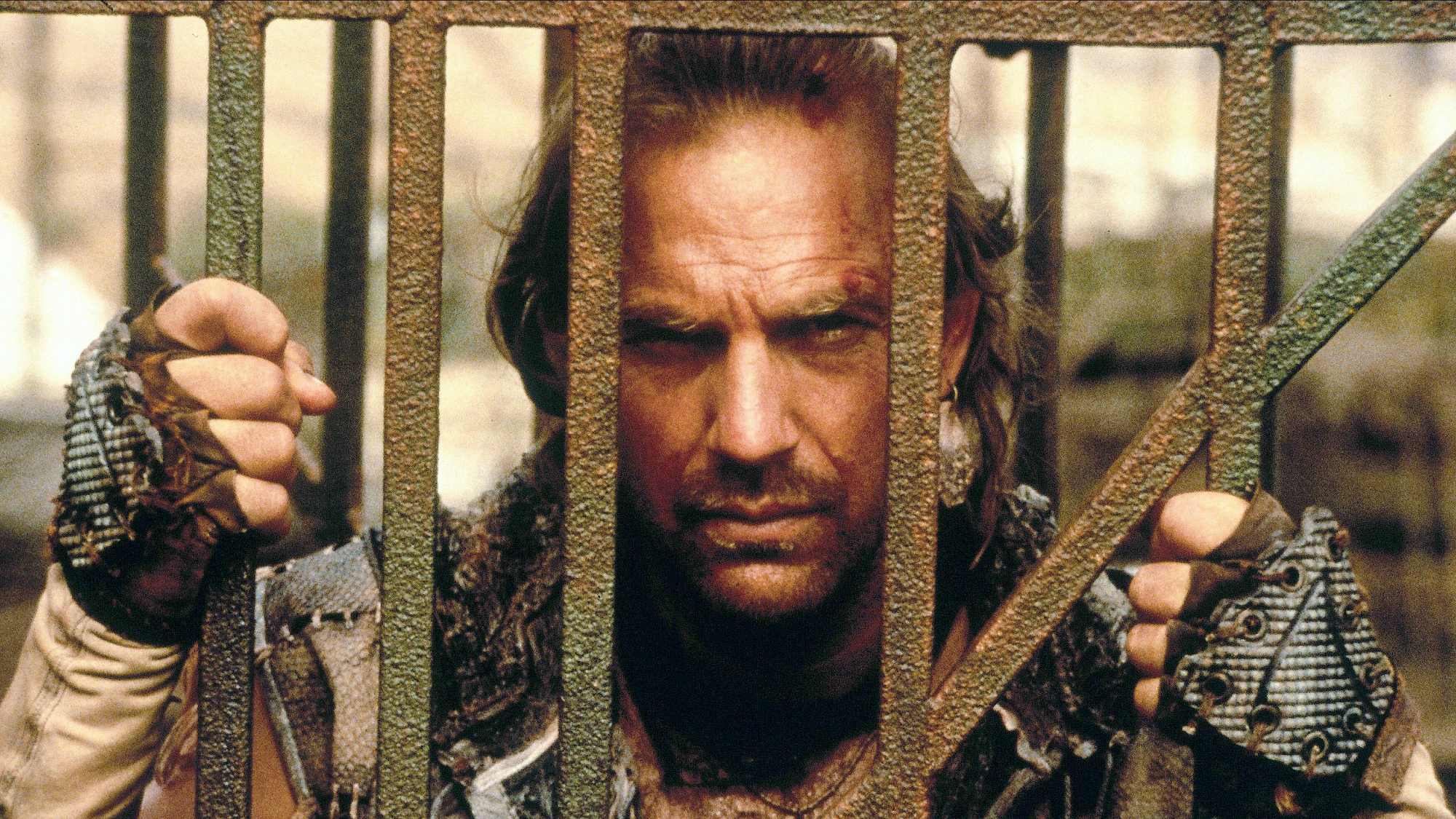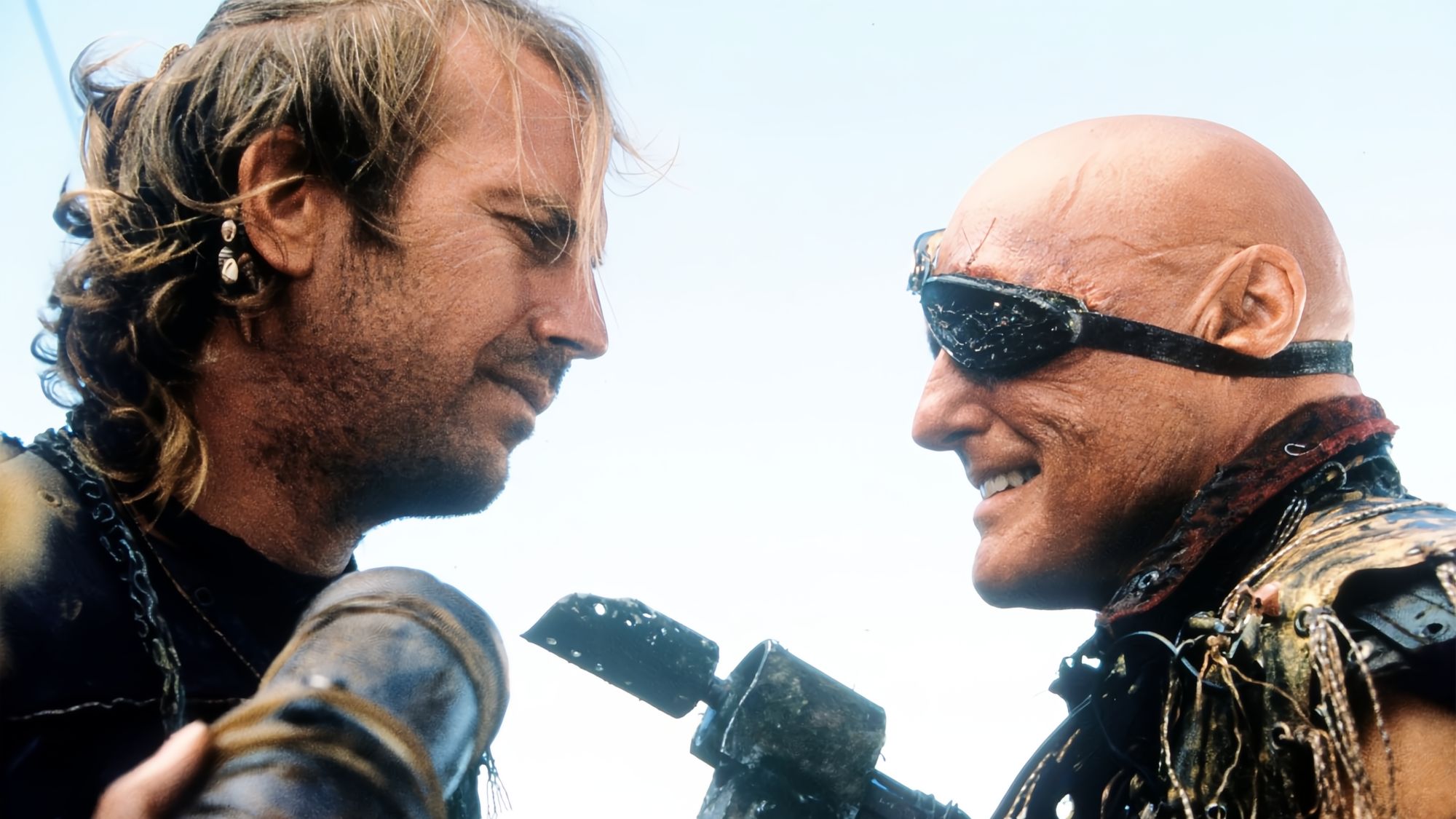You're all wrong — 'Waterworld' is a good movie
What I learned from re-watching 'Waterworld' 30 years later

“Waterworld” is an ambitious sci-fi action movie with a unique premise, stunning visuals and intense action. But Kevin Costner's post-apocalyptic adventure is remembered as one of Hollywood’s biggest flops and disappointments.
“Waterworld,” which celebrates its 30th anniversary this month, stars Costner as the Mariner, a drifter in a world covered in water. The Mariner reluctantly agrees to help Helen (Jeanne Tripplehorn) and the young Enola (Tina Majorino) search for dry land while avoiding the villainous Deacon (Dennis Hopper), who believes the little girl holds the secret that will change the world.
Upon further examination, “Waterworld” is not nearly as bad as you think. It’s not free from criticism, but there’s often more positive than negative.
An interesting concept with some breathtaking visuals
What if the world was covered in water? “The future... The polar ice caps have melted, covering the Earth with water. Those who survived have adapted to a new world,” the narrator says at the beginning. Recruiting the legendary Hal Douglas — arguably the most famous voice-over artist for trailer — to do the narration elevates the severity of the issue and raises the film’s expectations.
Would I have opened the film with Costner’s Mariner converting his pee into drinking water? I would not. It does, however, establish the Mariner as a self-sufficient man, and as you come to learn more about him, the term “creature” might be a better tag because of his gills and webbed feet.
The concept of treating everyday items like they’re worth more than gold was genius. Things we’d normally take for granted — like a jewelry box, dirt, plants, and crayons — are essential tools for survival.
The most stunning scenes in “Waterworld” are the chase sequences on water. Watching Costner maneuver up, down, and around his trimaran is riveting. Costner is the chef, and the boat is his kitchen. The fast-paced action pairs perfectly with James Newton Howard’s adventurous and upbeat score. The two major set pieces at the atoll and the Exxon Valdez oil tanker are loud, explosive, and pulse-pounding. Costner’s bread and butter are dramas, but he can hang as an action star in these scenes.
Get instant access to breaking news, the hottest reviews, great deals and helpful tips.

Steven Spielberg, who went through hell and back to direct “Jaws,” advised Reynolds and Costner not to film on open water. Reynolds and Costner did not listen to Spielberg’s advice, which led to several problems. Reading the tea leaves, Costner had a specific vision for the film and assumed creative control, which led to Reynolds quitting before the release.
While the relationship between Reynolds and Costner suffered, the film’s visuals are breathtaking. Costner, who was undeniably one of the five biggest movie stars at the time, looks like an iconic hero whenever he’s on the boat and staring out into the abyss. Reynolds perfectly captured the feelings of existential dread many would face had they never seen dry land.
“Waterworld” has its problems, from unintentional comedy and an underdeveloped romance to awkward sequencing and silly tone. Visuals are certainly not one of the aspects holding the film back.
Why are the comparisons to “Mad Max” a bad thing?
“Waterworld” has always drawn comparisons to “Mad Max,” George Miller’s iconic dystopian franchise. For starters, screenwriter Peter Rader said that producer Brad Krevoy offered him a job in the late ‘80s to write a “Mad Max” rip-off. By the time screenwriter David Twohy rewrote the screenplay in the early 1990s, “Waterworld” was essentially “Mad Max 2 on water.”

“Waterworld” isn’t subtle about the “Mad Max” similarities. The Mariner is a stand-in for Max Rockatansky; the ocean becomes the new Wasteland; the Deacon and the Smokers mirror Lord Humungus and his gang; and the Mariner’s mission — find dry land for Helen and Enola — resembles Max fighting to protect the settlers on their journey to the northern paradise.
I’m not saying “Waterworld’s” nautical action is better than the invigorating driving sequences in the “Mad Max” franchise. However, I do believe these sailing scenes — especially when the Mariner has to outrun the Smokers — are enthralling examples of inspired filmmaking from Reynolds.
Many of the reviews that panned “Waterworld” cited how the Costner epic is a worse version of “Mad Max.” If “Mad Max” is an A-tier movie and “Waterworld” is a B-level “Mad Max,” why is that a bad thing? Do you think people sit down and watch “Under Siege” and say, “Well, I don’t like it because it’s the inferior version of ‘Die Hard’?” Sorry, “Alien,” but I have to dock points off the review because you’re a worse version of “Jaws.”
Those are insane statements that no one would make. “Waterworld” isn’t as good as “Under Siege” and “Jaws,” but it has enough story and originality to deserve to lose the rip-off designation.
'Waterworld's' box office failure has been blown out of proportion
Nothing like bad press in the lead-up to a movie to tank a film’s chances of succeeding at the box office. Before the release in July 1995, the top story behind “Waterworld” had nothing to do with anything shown on-screen. Money, particularly the budget, generated the most headlines.

Universal initially authorized a $100 million budget. Logistical delays, on-set accidents, and poor weather pushed the shoot from 96 days to over 150 days. The budget skyrocketed to $175 million, the most expensive film ever made at that point. These rising costs led to the nicknames “Fishtar” and “Kevin’s Gate,” a play on two of the most notorious flops ever, “Ishtar” and “Heaven’s Gate.”
Hollywood’s classic rule says a film needs to make 2.5 times its budget to be considered profitable. That’s not an official rule, but it’s a good barometer of success. “Waterworld” ended its theatrical run, grossing $264 million worldwide. Even math novices know that gross does not equal profit.
Here’s the not-so-secret truth about “Waterworld”: It eventually made a profit thanks to TV broadcast rights and home video sales, among other things. “Waterworld” was also the ninth-highest-grossing movie of 1995. Studios today would sign up for a movie with “Waterworld’s” margins. Sequels have been commissioned for movies that have made way less than “Waterworld.”
Now, 30 years later, it’s time to retire the “Kevin’s Gate” nicknames in favor of “Kevin’s Gate Made Money.” “Waterworld” might have been a disappointment, but it was no disaster.
More from Tom's Guide
- 7 best TV shows and movies starring Kevin Costner
- Every Mad Max movie, ranked
- 49 best Netflix movies to stream right now

Dan is a talented content creator who specializes in pop culture, entertainment, and sports. His entertainment interviews have been featured on Digital Trends, where he has spoken with various actors and entertainers, including Brendan Fraser, Alison Brie, and James Cameron. Additionally, Dan is a sportswriter with The Sports Daily, breaking down the top news in the NFL and NBA while providing picks and predictions for each league. Other bylines include ComingSoon.net, Unafraid Show, Fansided, and WatchMojo. When he’s not working, Dan enjoys rooting for his favorite New York sports teams and watching the latest movie from Christopher Nolan or Martin Scorsese.
You must confirm your public display name before commenting
Please logout and then login again, you will then be prompted to enter your display name.

